The word "organic" need not conjure images of whole grain munching hippies in mysticism-drenched communes. (Or of modern urbanites listening to indie music on their iPods, for that matter.) In the realm of education, organic learning rejects the arbitrary division of subjects and presents information as a united whole. Particularly in language arts education, this means a different approach than most of us are used to.
For those of us who grew up in public school, we're used to one class period (and set of textbooks) for phonics, reading, spelling, vocabulary, handwriting, composition, etc. Even most private schools follow this model; and, because they're accustomed to it, the same method is implemented by many homeschool parents.
With the resurgence in popularity of Classical and Charlotte Mason education, the interest in unit studies, and a general departure from strictly textbook teaching, parents and educators have gradually realized that unnaturally separating topics isn't necessarily the best way to teach them. In order to read well, kids need to spell well, have large and growing vocabularies, and understand the nature of English as a hybrid language. To write well, they need these skills and others, like the ability to think clearly and organize ideas. Why not teach these things all together?
The best examples we've seen so far of integrated language arts courses are First Language Lessons (for younger students), and Spell to Write and Read (to be used as long as you need or see fit). Both start from the beginning, and both firmly implant in kids' minds the interconnectedness of all language study, showing them how the skills they're acquiring are used to communicate, and why knowing as well as possible is essential for success in school, at the jobs they'll have one day, and even in simple interpersonal communication at home.
Here is a quick summary of the Language Arts curricula we offer, in alphabetical order:
 |
A Beka Language Arts Grades K-12
While some educators are trying to integrate all language arts, others refuse to abandon the old model; A Beka Language Arts retains the division of subjects, but collates them into a workable whole with lesson plans and teacher's guides. There are still separate books for vocabulary, writing and grammar, spelling, reading, and handwriting, but the lesson plan/curriculum guides provide unity.
|
 |
AOP Lifepacs: Language Arts Grades K-12
A thoroughly traditional approach is offered by AOP Lifepacs: Language Arts. Covering kindergarten through 12th grade, students learn to read, write, spell, etc. through a series of 10 workbooks per year. The order of the material seems disorganized, so you probably want to plan on using this either straight through or not, though it would work as a remedial catch-up for struggling students. You could also potentially use single workbooks to focus on specific skills.
|
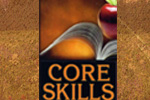 |
Core Skills: Language Arts Grades 1-12
Good for remedial work and reinforcement, Steck-Vaughn's Core Skills: Language Arts are pretty comprehensive, covering most ground needed for any grade, but lack unity or enough drill and review to really cement information in kids' heads. Many parents use these disposable workbooks to make sure they've covered everything or to refresh their students' memory on various topics before taking standardized tests.
|
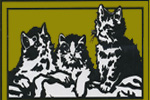 |
Emma Serl Language Lessons Grades 2-12
For old-fashioned types, the Emma Serl Language Lessons books offer reading and writing assignments originally published in the first 15 years of the 20th century. Be warned: some exercises require knowledge most modern students won't have. However, these are good introductory courses, and focus on an element of language arts most programs don't: critical thinking.
|
 |
First Language Lessons Grades K-5
First Language Lessons is exceptionally thorough. The author implements a "four-strand approach," using memorization, copywork and dictation, narration, and grammar to teach reading and writing. She stresses the need for kids to get things right the first time, so don't worry about how fast you're going—as long as your kids understand the material and can implement it consistently.
|
![]() |
Jensen's English Grades 7-9
Inside the bright covers of Jensen's single-volume English courses is a clear, no-frills approach to learning grammar, vocabulary, writing, and punctuation. Jensen's own style is often fairly verbose and uninteresting, but for getting the rules and the basics of academic writing down (at a non-expert level), there aren't many courses as straightforward or complete. The fact that you only have to buy four single relatively inexpensive books rather than a whole curriculum is a bonus.
|
 |
Life of Fred Language Arts Grades 6-12
This follows the same general format as Schmidt's math books. The course is student-directed, and relies more on the interesting format than activities or review for instruction. Kids will enjoy reading about Fred and his strangely normal-yet-abnormal antics that Schmidt manages to make interesting and funny, but we feel it isn't sufficient for high school and is best covered in 8th grade.
|
 |
Learning Language Arts Through Literature Grades 1-12
The Learning Language Arts Through Literature series is a prime example of integrated language arts instruction. Kids learn the elements of language arts through reading and copying good literature, as well as periodic unit-study-esque book studies. Unfortunately, the literature selections are often too brief, and the information for students learn is often presented incompletely.
|
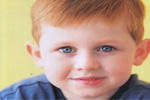 |
Queen Homeschool Language Lessons Grades K-12
Queen Homeschool Language Lessons is very limited in scope. It is exercise-based and encourages plenty of drill, but instructions are truncated, and students will end up doing more repetitive work than learning new information. These workbooks do, however, make excellent supplementary work in tandem with a more well-rounded curriculum.
|
 |
Royal Fireworks Press Language Arts Grades K-6
The language arts books from Royal Fireworks Press have been painstakingly designed to appeal not only to your student's brain, but also to their emotions, their aesthetic sense, etc. The approach is a traditional teacher guide/student worktext setup, but the methods employed are genuinely unique, and will keep even the most gifted students challenged and working hard. We don't carry these new as they are constantly being tweaked by the publisher.
|
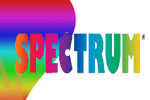 |
Spectrum Language Arts Grades 2-6
Good for remedial work and reinforcement, Spectrum Language Arts are pretty comprehensive but lack unity or enough drill and review to really cement information in kids' heads. Many parents use these disposable workbooks to get their students up to grade level before standardized tests.
|
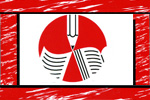 |
Spell to Write and Read Grades k-12
Wanda Sanseri emphasizes timing in her Spell to Write and Read program. Students are taught to spell words before they're taught to read them, a peculiar inversion she insists has a long heritage, and which many testify truly works. Not much is left out of this course, and kids will emerge from it to take on pretty much any language-related task you can throw at them with confidence and skill.
|
Integrated language arts programs take quite a bit more commitment than stand-alone programs that teach writing or reading or whatever. You can't really jump right in or right out of them because the material is organized in such a way as to build on previous concepts, or even simply with the understanding that students will follow the same program for multiple years.
Some of these courses are excellent, but we strongly suggest you do plenty of research before starting any of them. Those that only cover the earliest years (like First Language Lessons and Spell to Write and Read) are better because the intention is that eventually students will grow out of them and move on to something else. Whatever you choose to do, be involved; a strong language arts foundation is essential for success in every other subject, and you can't afford to simply assume your kids are doing well and learning what they need.
 |
Review by C. Hollis Crossman
C. Hollis Crossman used to be a child. Now he is a husband and father, teaches adult Sunday school in his Presbyterian congregation, and likes weird stuff. He might be a mythical creature, but he's definitely not a centaur.Read more of his reviews here.
|
Did you find this review helpful?